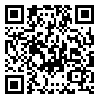Background and aims: human errors are of the most important causes of accidents in medical professions which impose exorbitant costs to the societies. Therefore, the present research was carried out in order to identify and evaluate human errors, using SHERPA technique, among physicians and nurses in emergency unit of one of the hospitals in Semnan.
Method: In this qualitative and cross-sectional study, first the aims and procedures were instructed to physicians and nurses and then by using the hierarchical task analysis (HTA), tasks and sub-tasks, related to these occupations, were determined. Next, based on the instruction of SHERPA, the work sheets were completed for 15 nurses and 8 physicians and the obtained data were analyzed.
Results: According to results, 359 errors were identified including 128 errors (35.65%) related to physicians' tasks and 231 errors (64.34%) related to nurses' tasks. Overall, action errors obtained the highest value (52.65%) and selection errors obtained the lowest value (8/9%) among all errors. Moreover, acceptable errors (with modification) had highest percentage and unacceptable errors had lowest percentage of degree of errors' risk.
Conclusions: According to the results, in both occupations, action errors (with the most frequency) and for physicians' tasks retrieval errors and in nurses' tasks, checking errors (with the most percentage of undesirable risk level) should be considered as priorities for controlling the errors.
Received: 2014/03/16 | Accepted: 2015/03/9 | Published: 2015/06/21
| Rights and permissions | |
 |
This work is licensed under a Creative Commons Attribution-NonCommercial 4.0 International License. |


